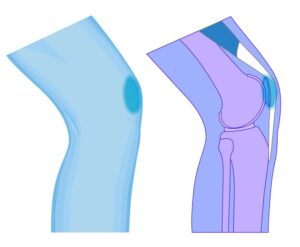Patellofemoral Pain Specialist

Do you participate in sports or activities that involve running or jumping? If so, you may experience patellofemoral pain caused by patellofemoral overload or a cartilage injury. Kneecap pain can worsen while walking up and down stairs, squatting or lunging. Patellofemoral overload syndrome specialist Doctor Riley J. Williams provides diagnosis as well as surgical and nonsurgical treatment options for patients in Manhattan, Brooklyn, New York City and surrounding areas who are experiencing symptoms of a patellofemoral overload syndrome. Contact Dr. Williams’ team today!
What is patellofemoral overload syndrome?
The patella (kneecap) is located at the front of your knee and articulates with the femur (thighbone). The patella connects muscles in front of the femur to the tibia and protects the knee. The patella sits in a groove in the femur that is called the trochlear groove. The underside of the patella and trochlear groove are covered with articular cartilage; this cartilage allows smooth movement of the patellofemoral joint. Patellofemoral overload syndrome, also known as patellofemoral pain syndrome (PFPS), is commonly called “runner’s knee” or “jumper’s knee,”. Patellofemoral overload is more commonly seen in women and can affect one or both knees. Contributing factors may be muscle imbalance, sudden changes in exercise intensity and regimens, the wearing of high heels, or excessive hiking and stairclimbing. Patellofemoral overload syndrome is marked by pain at the front of the knee around the patella. The pain is more distinguishable during exercises such as running, jumping, when walking up or down stairs or when squatting. PFPS can be caused by overuse or by an injury. PFPS can lead to further injuries such as patellofemoral cartilage injury. Dr. Riley J. Williams, orthopedic knee specialist serving Manhattan, Brooklyn, New York City, NY and surrounding areas has extensive experience in patellofemoral overload syndrome, patellofemoral cartilage injury and other knee joint related conditions.
What is a patellofemoral cartilage injury?
A patellofemoral cartilage injury is damage to the articular cartilage or connective tissue that allows the knee to glide easily within the trochlear groove. It can be caused from overuse, patella instability or knee trauma. This can lead to osteoarthritis in the knee. Osteoarthritis of the patellofemoral joint is commonly seen in athletes. Patellofemoral overload syndrome may also be referred to chondromalacia patella, which references degeneration of the cartilage in the kneecap.
What are the symptoms of patellofemoral overload syndrome?
Individuals in the New York area who experience PFPS report enhanced pain in the knee while walking up and down stairs, after sitting for extended periods of time, squatting, lunging, running, or jumping.
How is patellofemoral overload syndrome diagnosed?
Dr. Williams will most likely be able to diagnose PFPS with a physical examination. He will ask questions regarding your pain and when it began. He may gently pull and press on your knee or ask you to squat, jump or lunge to test your knee strength and pain level. Dr. Williams may be able to rule out other injuries by also checking hip rotation, knee stability and range of motion of the knee. Flexibility of the feet could contribute to PFPS, so Dr. Williams may check flexibility as well as alignment of the lower leg and your gait upon walking. An x-ray of the bone or an MRI scan of the soft tissue may be ordered to rule out any other injury.
What are the treatment options available for patellofemoral overload syndrome?
Non-surgical treatment:
Non-surgical methods for treating patellofemoral overload syndrome include rest when the injury flares up, NSAIDs (non-steroidal anti-inflammatories), such as ibuprofen, lifestyle changes and exercise. If the patient is overweight, weight loss will help alleviate added pressure on the injured knee(s). Strength training exercises can help add stability for the knee and perhaps a knee brace for extra support. Proper footwear and even the use of custom shoe orthotics may be suggested.
Surgical treatment:
Surgery is typically considered a last resort for PFPS. Certain factors such as fraying of the cartilage in the patella or excessive lateral tracking of the patella (when the kneecap shifts out of place upon bending the leg) could warrant surgery to correct these issues if conservative methods have failed. Surgical treatments for PFPS include a knee arthroscopy if Dr. Williams suspects other contributing factors such as loose bodies or cartilage damage or knee realignment procedures
For more information on patellofemoral overload syndrome, patellofemoral cartilage injury and the treatment options available, please contact the office of Riley Williams, MD, orthopedic knee specialist serving Manhattan, Brooklyn, New York City, NY and surrounding areas.
Locations
610 W 58th Street
New York, NY 10019
148 39th Street, 7th Floor
Brooklyn, NY 11232



